Can you bee-lieve these threatened species are crucial for pollination?
Pollination is crucial to biodiversity, including the ecosystems humans rely on for our own survival.
Over three-quarters of the world’s food crops rely on pollination, to some degree, by insects and other animals.
What often comes to mind when someone says ‘pollinator’ is bees, and while that is correct, in the spirit of Australian Pollinator Week, Saving our Species would like to broaden the horizons by sharing some of the unsung heroes doing the heavy lifting of pollination.
These are just some of the powerhouse threatened species playing an important role in ecosystems across New South Wales, including one independent little shrub which self-pollinates!
Of course, let’s also not forget the important work of human pollinators who are giving threatened species a helping hand.
A self-pollinator’s story
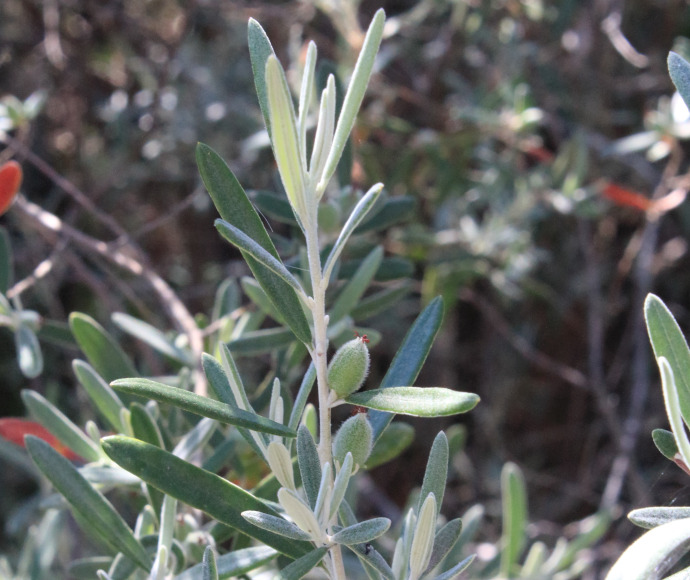
The endangered narrow-leaved bertya (Bertya ingramii) is a medium-sized shrub that only occurs on the New England Tablelands of New South Wales on Anaiwan Country.
So, how is a shrub a pollinator?! Well, this inconspicuous shrub has both male and female reproductive parts on each individual plant, meaning this species can do all the pollination work themselves.
A helping hand never goes astray though, so when they come into contact with pollen that’s been carried their way by the wind, they can bear more fruit.
However, as in every good story, there is some adversarial force making life a little difficult. For this cliff-edge-dwelling shrub, it’s an ant. Native ants like to collect this pollinator’s seeds and take them back to their nests. Unfortunately for the narrow-leaved bertya, fewer seeds means fewer seedlings, resulting in a lower repopulation of the species.
To aid in bolstering the population, Saving our Species are collecting seeds, undertaking surveys for additional populations and working on plans to find new areas to grow these shrubs which will support this species in securing a fruitful and independent future.
Visit this endangered species profile to learn more.
Small but mighty: the tiny powerhouse pollinator
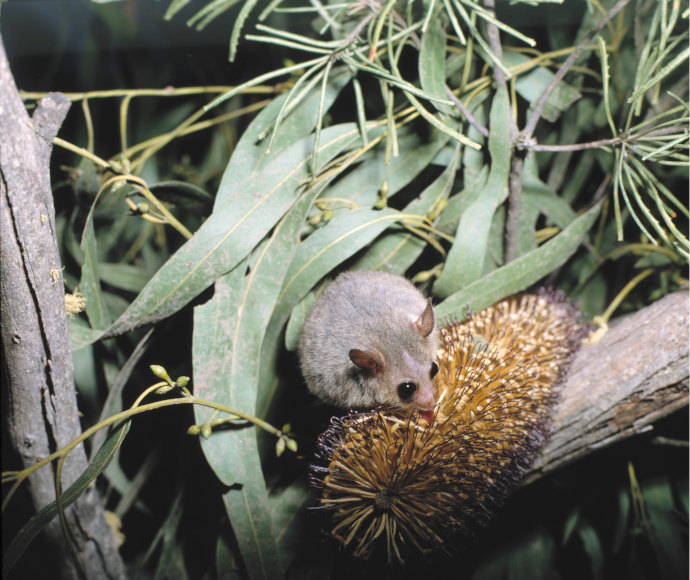
The vulnerable eastern pygmy-possum (Cercartetus nanus) may be small in size and only weigh as much as a lightbulb (between 15 and 43 grams), but they’re an incredibly important pollinator of heathland plants such as banksias.
Eastern pygmy-possums have a hankering for nectar and pollen collected from banksias, eucalypts and bottlebrushes. They will also feed off soft fruits from these plants, as well as insects – if they’re the only thing on the menu, which may sometimes be the case in locations such as wet forests.
These epic little climbers are found in south-eastern Australia stretching as far as Tasmania. In New South Wales, they are found from the coast to inland as far as the Pilliga, Dubbo, Parkes and Wagga Wagga.
Saving our Species is striving to protect and conserve this species by investigating safer road crossing options such as underpasses or overpasses, while also seeking to protect known habitat, particularly in areas where there are hollow-bearing trees and an array of their favourite food sources.
Continue discovering how Saving our Species is working to protect this vulnerable species.
The power of a furry face
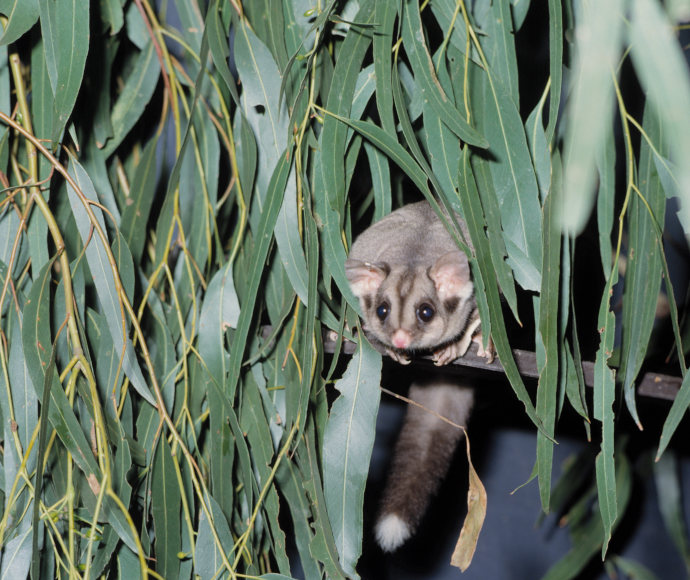
While the squirrel glider (Petaurus norfolcensis) may not be the first species that comes to mind when you think of a pollinator, these little leapers are important pollinators of banksia, eucalypts and other tree and shrub species.
Feeding on nectar as they leap from flowering tree to flowering tree, the gliders collect pollen on their furry faces and whiskers, distributing it to new trees as they move across the landscape. Forget all the fancy gear for sale at the local nursery, furry faces covered with pollen are the original propagation tool for various plants. This contributes to the regeneration and diversity of vegetation in their ecosystems.
Squirrel gliders are widely yet sparsely distributed across eastern Australia, from northern Queensland to western Victoria. In New South Wales, the population in Wagga Wagga is listed as endangered. Saving our Species is working to protect these pollinators by raising awareness of known habitats to ensure the community take care when travelling through these areas.
Continue reading about squirrel gliders.
The sweet-toothed traveller
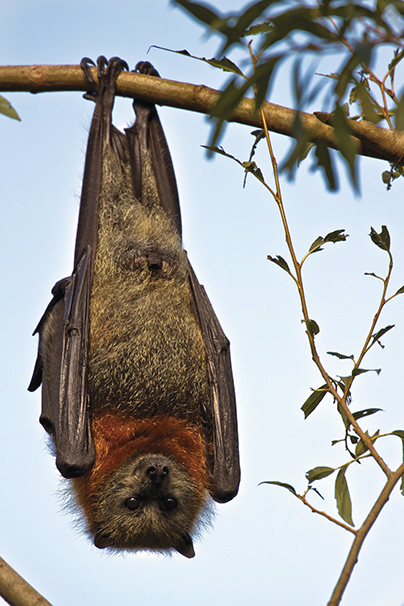
The grey-headed flying-fox (Pteropus poliocephalus) is Australia’s largest bat, with the furthest-reaching pollination potential. This species is crucial for the wellbeing of ecosystems across the eastern coast of Australia. By helping more than 100 native plant species to reproduce, the grey-headed flying-fox supports the health of native forests.
This sweet-toothed pollinator forages on the nectar and fruit from a wide range of plant species, covering large distances (up to 50 km in one night) in search of food – we all have that one favourite café we’ll happily hike to. These nightly foraging activities result in large amounts of pollen being collected on their fur and transferred between plants as they move from tree to tree.
This ability to eat a buffet of goods across a large area of the country makes them an effective pollinator for different types of species and supports genetic diversity amongst plant populations.
This is particularly important for fruit-bearing trees, such as eucalypts and rainforest species. The flying-foxes’ visits to these trees not only provide them with a healthy snack, but also benefit the plants and other wildlife that rely on these species for food.
The Saving our Species team is working closely with partners to raise awareness of the importance of these pollinators, as well as working to restore roost sites by undertaking weed control and planting new trees for future generations of flying-foxes.
You can discover more about these epic eaters.
Going the distance for biodiversity
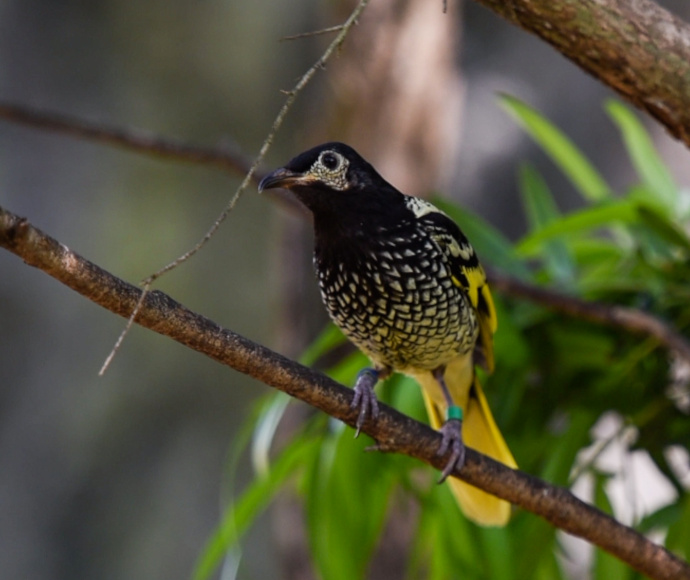
The regent honeyeater (Anthochaera Phrygia) is a critically endangered bird with a population of fewer than 350 individuals across the species’ entire range, from Queensland to Victoria. The exquisitely coloured bird is a crucial pollinator – known to fly more than 350 km in a season, pollinating Australia’s iconic eucalyptus trees and other species as they travel.
The regent honeyeater has a specialised beak and tongue that is great at extracting nectar from flowers. As they dip their beaks into the nectar of various species, including eucalypts, banksias and other native plants, they encounter the male and female reproductive parts of flowers, helping with the fertilization process for the plants.
The trees they pollinate go on to provide food and habitat for many other native animals, including cockatoos, parrots, gliders and possums, making regent honeyeaters important biodiversity champions in open forests and woodlands across eastern New South Wales and Victoria.
To help increase the population of these birds, Saving our Species is working with Taronga Conservation Society Australia and BirdLife Australia to breed and release regent honeyeaters back into suitable habitats, bolstering the species’ numbers in the wild.
Watch the release of this critically endangered species.
Pretty purple pollinator
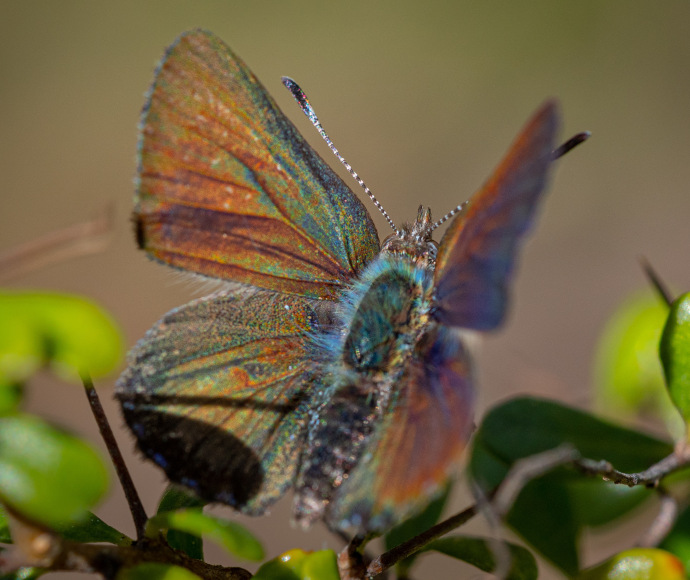
The purple copper butterfly (Paralucia spinifera), also known as the Bathurst copper butterfly, plays an important role as a pollinator and as a part of the food chain.
When in caterpillar form, they eat the leaves of just one plant species (native blackthorn), and cycle nutrients back into the soil through their faeces. They serve as food for animals such as birds, spiders, and insects like dragonflies, flies and wasps, and they have an important relationship with a particular black ant, which protects the purple copper butterfly from predators during the period when they are eggs, larvae/caterpillars and pupae. As a thank you to their bodyguards, the species will gift the ants a sugary honeydew which they produce.
The Counting Coppers project, run by Saving our Species in partnership with Butterflies Australia, asks citizen scientists to record their sightings during the spring butterfly season through the easy-to-use Butterflies Australia app. The data collected will help the team understand when and where the species is flying, and possibly uncover more populations. This will help researchers develop plans to protect these precious little pollinators.
The app can be downloaded for free from the Google and Apple app stores.
Flutter over to the Saving our Species profile to discover more about this rare butterfly.
More than meets the eye
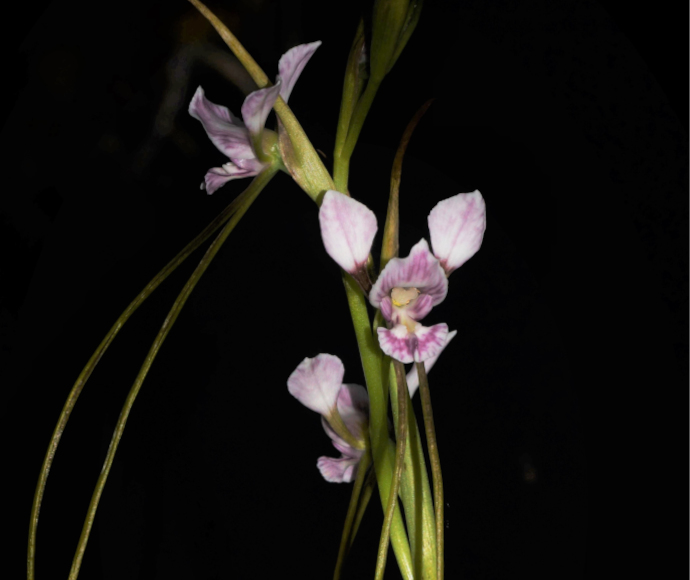
The endangered Oaklands diuris (Diuris callitrophila) may not be what it seems. To the human eye, it’s a pretty orchid, but to pollinators like the blue-banded bee, the flowers look like a delicious snack.
Ecologists suspect that to the bees, the flower of this orchid looks and smells like other plant species which provide nectar. Many bees, lured in by the illusion of a tasty treat, inadvertently collect and distribute pollen from orchid flowers. This is called ‘food rewarding floral mimicry’ and is an evolutionary strategy that has locked down the true meaning of ‘work smarter, not harder.’ Investigations by the Royal Botanic Gardens Victoria are underway to confirm this process.
Despite this clever method of pollination, many orchids such as the Oaklands diuris still face key threats including invasive weeds and over-grazing. In 2022, the Wild Orchids project planted over 4,000 orchids in the wild. The Saving our Species team is managing these new and existing wild populations to mitigate threats to ensure their survival.
Saving our Species, in collaboration with the Australasian Native Orchid Society and Murray Local Land Services, will be monitoring translocated populations to determine the success of the Wild Orchids project. They’ll also be keeping an eye out for the beautiful blue-banded bee.
Buzzing for more? Keep reading about how Saving our Species is striving to protect and conserve this fascinating orchid.
A helping (human) hand
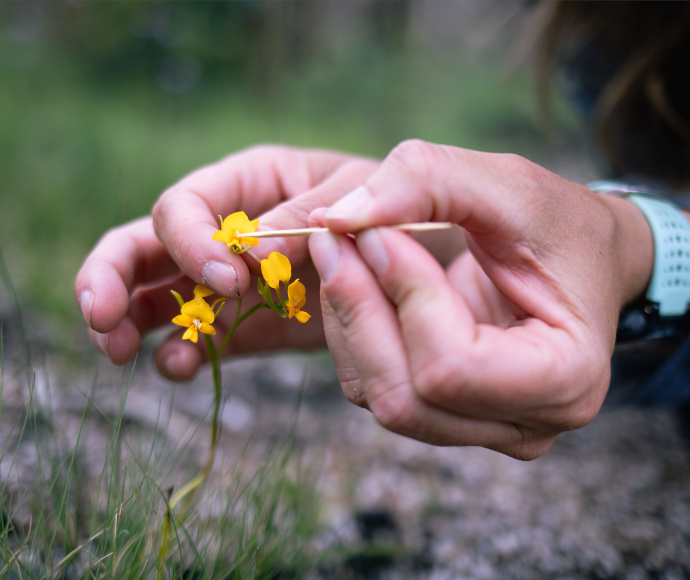
Did you know that humans can also be pollinators? Hand pollination is the process of manually pollinating a plant by taking the pollen from one flower and placing it on another. Normally this job is reserved for natural pollinators like insects, bees or birds, however many plants rely on specific species to do the job for them. Sometimes there might not be enough of this species around, particularly after a disturbance such as a bushfire, and this is when humans, such as the experts from Saving our Species, will step up and take on the job.
An example of this intricate process in practice is the pollination and seed collection of the endangered buttercup doubletail orchid (Diuris aequalis). Orchids like the buttercup doubletail contain ‘pollinia’ rather than loose pollen. Pollinia are sacs of pollen encased in a waxy coating with a disc designed to stick to a visiting insect. Toothpicks are used to cross the pollinia from the flowers of different plants, and then these plants are covered with a fine mesh bag to catch the ripe seeds as they fall. The team will then return several months later to collect these (hopefully full) seed bags and safely store them so they can later plant these seeds to bolster populations and secure the future of the species.